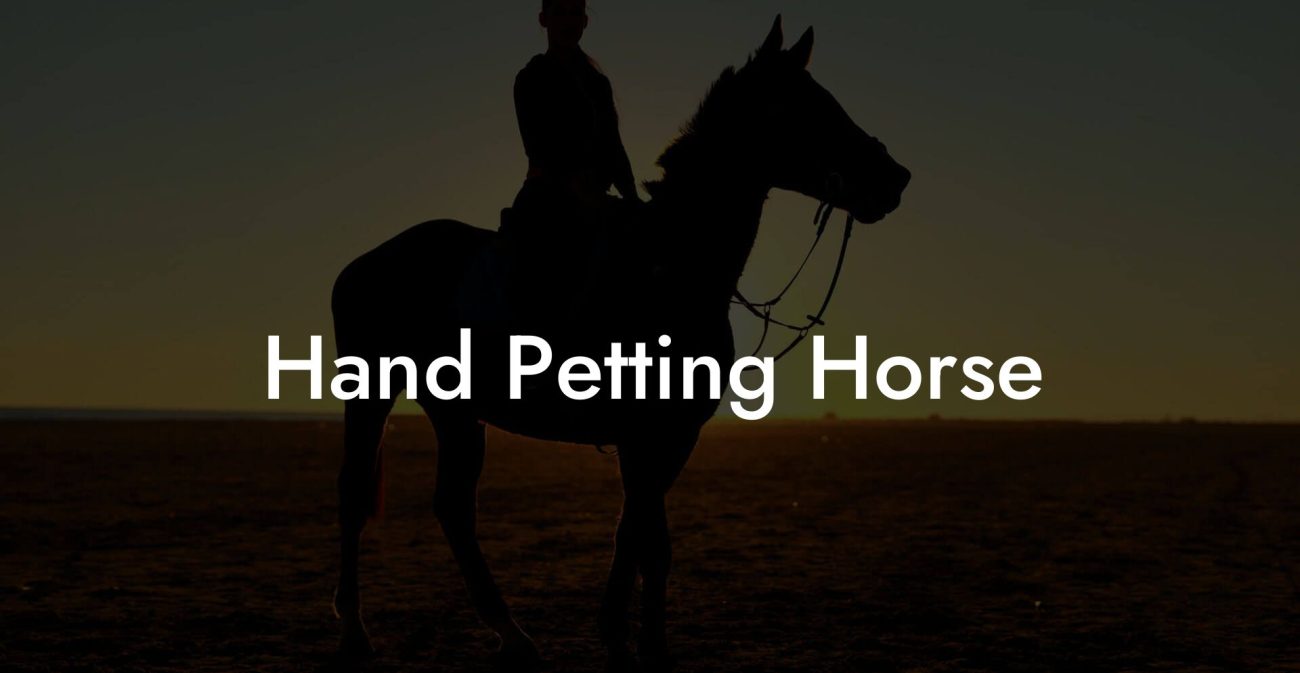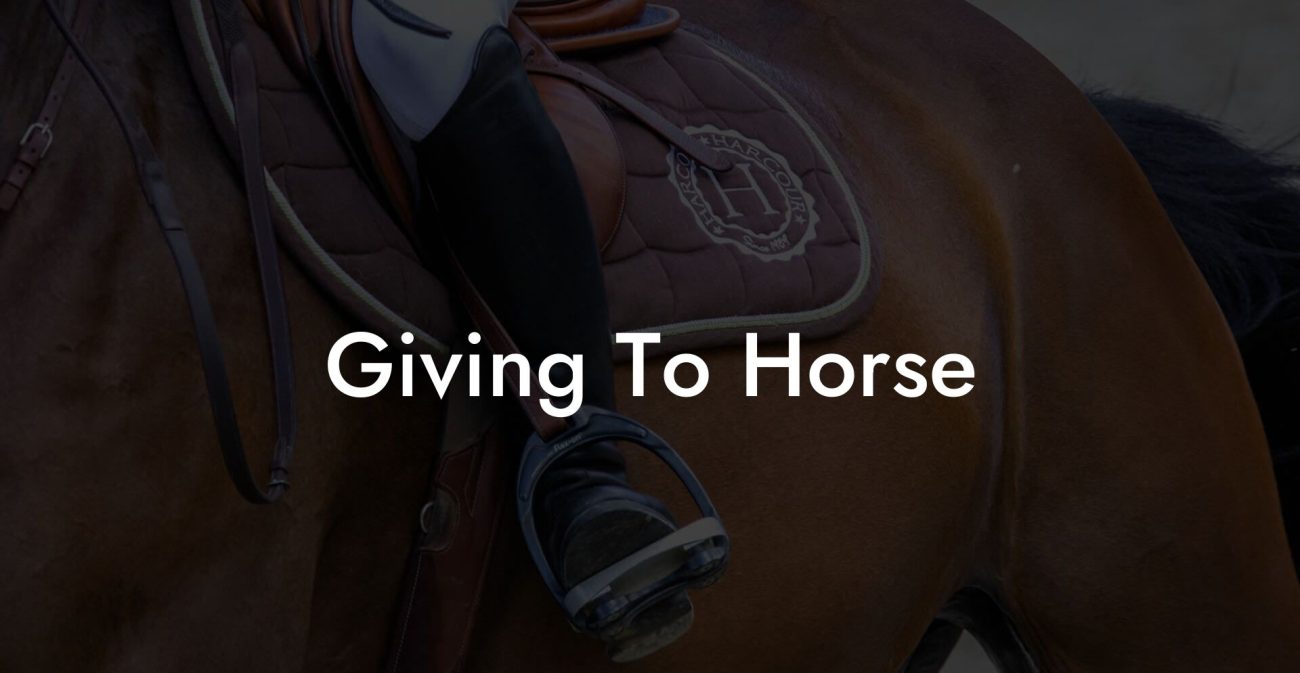If you’ve ever tried wrangling both a hefty bank account and a spirited horse, you know that budgeting for your equine companion can feel like trying to lasso a runaway stallion. A well-crafted "Horse Budget Worksheet" isn’t just a spreadsheet, it’s your secret weapon to keep your horse care expenses in check while still enjoying the thrill of riding into the sunset, all without draining your wallet. Whether you're a millennial with a flair for digital tools or a Gen-Z equestrian enthusiast who loves a good meme about hay bales and horsepower, this guide will show you how to tame the financial wild west of horse ownership with humor, savvy, and a touch of style.
Quick Links to Useful Sections
- Why You Need a Horse Budget Worksheet
- Understanding the True Costs of Horse Ownership
- Designing Your Custom Horse Budget Worksheet: Step by Step
- Step 1: Define Your Categories
- Step 2: Establish a Baseline
- Step 3: Choose Your Tools
- Step 4: Input the Data
- Step 5: Analyze and Adjust
- Integrating Digital Tools and Apps for Smarter Budgeting
- Tips for Maximizing Your Horse’s Lifestyle Without Breaking the Bank
- Plan Ahead for Seasonal Costs
- Buy in Bulk When Possible
- Negotiate Services and Seek Offers
- Consider Shared Expenses
- DIY When Feasible
- Budgeting for Unexpected Costs
- Real-Life Case Studies: Budgeting Success in the Saddle
- Case Study 1: The Startup Equestrian
- Case Study 2: The Social Media Savvy Rider
- Case Study 3: The Veteran Horse Owner
- Resources and Community Support: Your Next Steps
- Frequently Asked Questions about the Horse Budget Worksheet
- Your Next Step to Equine Financial Freedom
Why You Need a Horse Budget Worksheet
Let’s be real: horses are majestic, but they aren’t exactly known for their frugality. Between feed, veterinary visits, tack, stabling, and the occasional splurge on a custom saddle (because, hey, even horses deserve to ride in style), costs can add up faster than a galloping racehorse. Enter the horse budget worksheet, a tool that helps you track every penny and plan for both regular care and those pesky surprise bills.
Think of it as your financial blueprint for maintaining a happy, healthy horse without the anxiety of an ever-empty bank account. A comprehensive budget worksheet allows you to see where every dollar is going, anticipate future expenses, and even discover clever ways to save money while still giving your four-legged friend the best life possible. It’s not just about crunching numbers; it’s about creating a sustainable lifestyle that supports both you and your magnificent equine partner.
Whether you’re new to the world of horse ownership or a seasoned rider looking to optimize your budget, this guide will equip you with the insights and practical steps you need to craft a worksheet that works as hard as your horse does.
Understanding the True Costs of Horse Ownership
Owning a horse is much like owning a small business: there are constant expenses that require careful planning and management. From the daily costs of feed and grooming to the occasional vet emergency, every item on your horse budget worksheet tells a story. And trust us, that story is worth reading.
Start by breaking down the major expense categories:
- Feed and nutrition: The cost of hay, grain, supplements, and treats. Did we mention organic oats might burn a hole in your pocket?
- stable and Boarding: Your horse’s home is its castle, and just like you wouldn’t skimp on rent, your horse deserves a quality stable or boarding facility.
- Veterinary Care: Regular check-ups, vaccinations, dental care, and emergency treatments. Horses can be unpredictable, and when they throw a temper tantrum, the vet bill comes galloping in.
- Farrier and Grooming: Regular hoof care, trimming, and grooming essentials to keep your horse in tip-top shape (and Instagram-worthy, too).
- Tack and equipment: Saddles, bridles, blankets, and all the extra accessories that make your ride both comfortable and stylish.
- training and Lessons: Whether you're hiring a trainer or investing in a riding program, this category ensures that both you and your horse develop new skills and enjoy a fun learning process.
- Insurance and Licensing: Coverage for your horse’s well-being and any potential liabilities, ensuring you and your equine buddy are covered in all situations.
By categorizing these costs, you gain a clear picture of where your money is going and can begin to strategize ways to reduce expenses without compromising on quality care.
Make sure your worksheet also has a section for miscellaneous expenses. Whether it’s an unexpected trip to the farrier or a last-minute feed shortage, those little surprises can make a big impact on your overall budget.
Designing Your Custom Horse Budget Worksheet: Step by Step
Creating a personalized horse budget worksheet isn’t rocket science, it’s more like assembling a well-balanced meal after a long day at the barn. Follow these steps to build a worksheet that not only tracks expenses but also provides insight into your spending habits so you can make smarter decisions.
Step 1: Define Your Categories
Begin by listing all possible categories related to horse care. Use the major expense categories we discussed above and add any additional ones that are specific to your situation. For example, if you participate in numerous equestrian events, add a category for competition fees, travel, and ancillary costs.
Step 2: Establish a Baseline
Gather historical data if you’ve been keeping track of this stuff already. If not, do some research online or consult with other horse owners to get an idea of what your typical monthly, quarterly, and annual expenses might be. This baseline will serve as the starting point for your budgeting.
Step 3: Choose Your Tools
In today’s digital age, you have many options for creating your budget worksheet. Whether you prefer a simple spreadsheet (Excel or Google Sheets), budgeting software, or even an app designed for horse owners, choose a tool that fits your tech comfort level and lifestyle.
Step 4: Input the Data
Now comes the fun (or not-so-fun) part: entering your data. Start with fixed costs, such as boarding fees, which are predictable each month. Then, add variable costs like feed prices and veterinary bills. Regularly update your worksheet to reflect any changes or unexpected expenses.
Step 5: Analyze and Adjust
Use your worksheet to analyze spending patterns. Are you consistently overspending in one category? It might be time to shop around, renegotiate contracts, or find more cost-effective solutions without compromising quality care for your horse.
Pro tip: Consider setting aside a “rainy day fund” within your worksheet for emergency expenses, because even the best-planned budgets sometimes encounter surprises.
Integrating Digital Tools and Apps for Smarter Budgeting
Let’s face it: in this digital era, carrying a pen and paper to track your horse expenses is so last century. There are plenty of innovative apps and software tools designed to simplify budgeting, and many of them are perfect for tech-savvy millennials and Gen-Zers.
Consider tools like Google Sheets, which can be customized to create real-time collaborative budget worksheets. Add-ons like budgeting templates make it even easier to adjust figures, generate graphs, and gain instant insights into your spending habits. If you want something more robust, explore specialized equine management software that tracks not just expenses, but also schedules, health records, and even training progress.
For those who love the convenience of smartphones, several budgeting apps allow you to snap a photo of a receipt and automatically categorize expenses. Integrating such tools into your horse budget worksheet can help automate the process and reduce the chance of oversights.
The key is to choose digital solutions that resonate with your workflow. Experiment with different options until you find the one that fits seamlessly into your daily routine, whether you’re updating numbers while taking a break in the barn or doing a monthly review from the comfort of your couch.
Tips for Maximizing Your Horse’s Lifestyle Without Breaking the Bank
Horse care doesn’t have to be a financial burden. With a savvy approach to budgeting, you can ensure that your equine companion enjoys the finest care while you maintain a healthy bank balance. Here are some money-saving tips that are both practical and fun:
Plan Ahead for Seasonal Costs
Horses require different care depending on the season. For instance, winter may necessitate additional costs for stall heating and extra feed, while summer might include cooling measures and fly control products. By planning ahead and incorporating these seasonal variations into your budget worksheet, you’re better prepared for the ups and downs throughout the year.
Buy in Bulk When Possible
And no, we’re not exclusively talking about hay bales (although bulk buying hay often saves money too). Many equine products, from supplements to grooming supplies, are available at discounted rates when purchased in larger quantities. Just be sure to factor storage and shelf life into your calculations.
Negotiate Services and Seek Offers
Like all savvy consumers, don’t be afraid to negotiate prices with service providers such as boarding facilities, farriers, and veterinarians. Loyalty programs, early-payment discounts, and seasonal promotions can all lead to significant savings.
Consider Shared Expenses
If you have friends or neighbors who also own horses, consider forming a co-op to share the costs of services like group riding lessons, bulk feed purchases, or even hiring a trainer. Not only does this build community, but it also reduces individual expenses.
DIY When Feasible
There are plenty of tasks you can do yourself, such as basic grooming, mucking out stalls, and even some minor stabling repairs. While professional help is essential for certain tasks, handling simple chores can free up funds for more significant needs.
By incorporating these savings strategies into your horse budget worksheet, you’re not just tracking expenses, you’re actively managing your the equine care budget to get the most bang for your buck. Remember, a little planning goes a long way in ensuring optimal care for your horse and a balanced lifestyle for you.
Budgeting for Unexpected Costs
Life with a horse is full of surprises, both the wonderful and the wallet-wrenching kind. While it’s tough to plan for every hiccup, having a dedicated section in your budget worksheet for unplanned expenses is a game changer.
Unexpected vet visits, emergency farrier trips, or even spontaneous repairs in your horse’s stable can throw off your finances if you’re not prepared. By allocating a percentage of your total monthly budget to an “Emergency Equine Fund,” you can cushion the financial shock and continue providing top-notch care without spiraling into debt.
Tracking these unpredictable expenses also helps you analyze patterns over time. Perhaps certain emergencies tend to occur seasonally or are linked to specific conditions, recognizing these trends can inform better preventive measures and smarter budgeting strategies in the future.
Real-Life Case Studies: Budgeting Success in the Saddle
Nothing beats hearing from fellow horse enthusiasts who’ve mastered the art of the horse budget worksheet. Here are a few real-world examples of how riders and owners transformed their financial management and improved their overall horse care.
Case Study 1: The Startup Equestrian
Meet Alex, a young entrepreneur who fell in love with horses after a serendipitous ride across the countryside. With a tight budget and big dreams, Alex used a custom Google Sheet template to track every detail of horse care expenses. Over time, Alex discovered that by negotiating bulk deals with feed suppliers and partnering with other local riders to share board costs, the overall monthly expenditure dropped by nearly 20%. Alex’s diligent record-keeping not only saved money but also opened the door to smarter reinvestments in high-quality training and health care for their beloved horse.
Case Study 2: The Social Media Savvy Rider
Taylor, a popular social media influencer within the equestrian community, turned an ordinary budget worksheet into a showcase of efficiency and creativity. By integrating budgeting apps with real-time expense tracking and visual analytics, Taylor was able to share monthly updates and budget hacks with thousands of followers. Not only did this transparency build trust within the community, but it also led to partnerships with equine brands eager to sponsor cost-effective care tips. Taylor’s approach underscores that a well-maintained horse budget worksheet is more than just a financial tool, it’s a platform for community engagement and shared success.
Case Study 3: The Veteran Horse Owner
For many long-time horse owners, the costs of raising a horse can creep up over the years. Jamie, a dedicated rider with decades of experience, decided it was time to overhaul an outdated paper record system. By switching to a digital horse budget worksheet, Jamie was able to clearly see where expenses were ballooning and make necessary adjustments. With a focus on preventive care and strategic spending, Jamie managed to reduce unnecessary expenses, ensuring that the horse’s health was maintained without the constant financial strain. This move not only improved the quality of care but also extended the horse’s productive years by keeping stress levels, both financial and biological, at bay.
These case studies illustrate that regardless of your experience or financial background, a well-designed horse budget worksheet can transform your approach to equine care, saving you money, reducing stress, and even inspiring a wave of community innovation.
Resources and Community Support: Your Next Steps
One of the best things about the modern equestrian community is the wealth of resources and support available at your fingertips. Beyond a meticulously maintained horse budget worksheet, tapping into a network of like-minded individuals can provide you with fresh insights, tips, and even opportunities to collaborate on cost-saving initiatives.
Here are some actionable next steps:
- Join Online Communities: From Facebook groups to niche subreddits, there are numerous online forums where horse owners share their budgeting hacks, vendor reviews, and experiences with cost-cutting measures. These communities can be a goldmine of real-world advice.
- Attend Webinars and Workshops: Look for virtual events hosted by equine experts. Many of these sessions cover financial planning, horse care innovations, and even digital tool tutorials, perfect for staying on top of the trends.
- Consult with Experts: Consider reaching out to a certified equine financial advisor or a seasoned barn manager who can offer tailored advice. Their experience can be invaluable in fine-tuning your budget and spotting potential cost savings.
- Leverage Digital Tools: Explore apps and software platforms that specialize in equine management. Many of these tools not only track expenses but also offer integration with scheduling, reminders, and even veterinary history management.
- Share Your Journey: Document your budgeting experience on social media or a personal blog. By sharing your trials and triumphs, you not only inspire others but might also attract valuable feedback and collaborative opportunities.
Each of these resources can be integrated into your ongoing financial strategy, ensuring that your horse budget worksheet remains a living document, one that evolves with your needs and the ever-changing landscape of horse care.
Frequently Asked Questions about the Horse Budget Worksheet
Below are some of the most common questions we get about managing your horse care finances, along with easy-to-follow answers to help you get the most out of your budget worksheet.
1. What is a Horse Budget Worksheet and why do I need one?
A Horse Budget Worksheet is a comprehensive tool designed to help you track and plan all the expenses associated with caring for your horse. It keeps you organized, highlights cost-saving opportunities, and ensures you’re prepared for both routine and unexpected expenses.
2. How do I customize a horse budget worksheet to fit my needs?
Start by identifying all categories specific to your situation, feed, boarding, veterinary care, and more. Use digital tools like Google Sheets or budgeting apps to input your historical data and update it regularly. Tailor the categories and expense frequencies to match your unique horse care routine.
3. Can a budget worksheet really help reduce my costs?
Absolutely. By clearly tracking your spending, a budget worksheet enables you to identify areas where you can cut costs, take advantage of bulk purchases, or negotiate better deals with service providers, all of which lead to long-term savings.
4. What digital tools are recommended for creating a horse budget worksheet?
Many owners find success with customizable spreadsheets on platforms like Google Sheets or Microsoft Excel. Additionally, specialized equine management software and budgeting apps can provide more advanced features, such as real-time expense tracking and integration with your mobile devices.
5. How often should I update my horse budget worksheet?
For best results, update your worksheet on a monthly basis. Regular updates allow you to track trends, adjust for seasonal changes, and ensure that you’re staying ahead of unexpected costs.
6. What should I do if I encounter unexpected veterinary or farrier expenses?
It’s essential to have an “Emergency Equine Fund” within your worksheet. This dedicated section helps cushion unexpected expenses, so you’re never caught off guard by a sudden spike in costs.
7. Can I share my horse budget worksheet with my barn manager or equine partner?
Definitely! Collaborative budgeting can improve communication and help everyone involved in your horse’s care to be more cost-conscious. Digital tools make it easy to share updated versions in real time.
8. Are there pre-made templates available for beginners?
Yes, numerous free and paid templates exist online that can serve as a starting point. You can then customize these templates to better reflect your personal spending habits and care routine.
With these FAQs, we hope you feel more empowered to take control of your horse care finances without the stress and disorganization that often comes with managing a living, breathing business on four legs.
Your Next Step to Equine Financial Freedom
The journey to mastering your horse care expenses starts with one simple tool, a well-crafted Horse Budget Worksheet. By taking the time to understand every cost, customize your financial tracking, and leverage digital tools, you’re setting yourself up for a life where you can enjoy every ride without worrying about your budget.
Embrace the challenge with a sense of adventure, and remember that every great rider faces hurdles along the way. Whether you’re optimizing your monthly spending, planning for seasonal costs, or preparing for unforeseen emergencies, the key is to stay proactive and adaptable.
Your horse deserves the best care, and you deserve the peace of mind that comes with being financially prepared. So saddle up, grab your digital pen, and start building the ultimate Horse Budget Worksheet that will become your trusted partner in both financial planning and equine excellence.
Here’s to many smooth rides, fewer financial surprises, and a future where your equine lifestyle is both extraordinarily fulfilling and admirably budgeted. Happy budgeting, and may your wallet be as well-managed as your jumps on the show ring!













